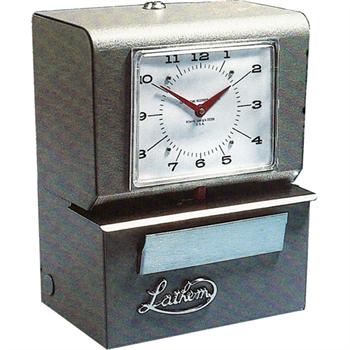
Eur Spine J 9:56–59įrangen TM, Zilkens C, Muhr G, Schinkel C (2007) Odontoid fractures in the elderly: dorsal C1/C2 fusion is superior to halo-vest immobilization. Īndersson S, Rodrigues M, Olerud C (2000) Odontoid fractures: high complication rate associated with anterior screw fixation in the elderly. Scheyerer MJ, Zimmermann SM, Simmen HP, Wanner GA, Werner CM (2013) Treatment modality in type II odontoid fractures defines the outcome in elderly patients. Joestl J, Lang NW, Tiefenboeck TM, Hajdu S, Platzer P (2016) Management and outcome of dens fracture nonunions in geriatric patients. Hart R, Saterbak A, Rapp T, Clark C (2000) Nonoperative management of dens fracture nonunion in elderly patients without myelopathy. īutler JS, Dolan RT, Burbridge M, Hurson CJ, O’Byrne JM, McCormack D, Synnott K, Poynton AR (2010) The long-term functional outcome of type II odontoid fractures managed non-operatively. Harrop JS, Hart R, Anderson PA (2010) Optimal treatment for odontoid fractures in the elderly. Ĭhapman J, Smith JS, Kopjar B, Vaccaro AR, Arnold P, Shaffrey CI, Fehlings MG (2013) The AOSpine North America Geriatric Odontoid Fracture Mortality Study: a retrospective review of mortality outcomes for operative versus nonoperative treatment of 322 patients with long-term follow-up. Konieczny MR, Gstrein A, Muller EJ (2012) Treatment algorithm for dens fractures: non-halo immobilization, anterior screw fixation, or posterior transarticular C1-C2 fixation. Koivikko MP, Kiuru MJ, Koskinen SK, Myllynen P, Santavirta S, Kivisaari L (2004) Factors associated with nonunion in conservatively-treated type-II fractures of the odontoid process. Joaquim AF, Patel AA (2015) Surgical treatment of Type II odontoid fractures: anterior odontoid screw fixation or posterior cervical instrumented fusion? Neurosurg Focus 38:E11. Įlgafy H, Dvorak MF, Vaccaro AR, Ebraheim N (2009) Treatment of displaced type II odontoid fractures in elderly patients. Molinari RW, Khera OA, Gruhn WL, McAssey RW (2012) Rigid cervical collar treatment for geriatric type II odontoid fractures. Horn EM, Theodore N, Feiz-Erfan I, Lekovic GP, Dickman CA, Sonntag VK (2006) Complications of halo fixation in the elderly. Lieberman IH, Webb JK (1994) Cervical spine injuries in the elderly. Muller EJ, Schwinnen I, Fischer K, Wick M, Muhr G (2003) Non-rigid immobilisation of odontoid fractures. Wagner SC, Schroeder GD, Kepler CK, Schupper AJ, Kandziora F, Vialle EN, Oner C, Fehlings MG, Vaccaro AR (2017) Controversies in the management of geriatric odontoid fractures. Ryan MD, Henderson JJ (1992) The epidemiology of fractures and fracture-dislocations of the cervical spine. These slides can be retrieved under Electronic Supplementary Material. Hard collar immobilization led to a favourable functional outcome with mRS-post, NDI and SWPS values diffusely encouraging whatever a bony union or a fibrous non-union was obtained. In geriatric type II odontoid fractures, pre-injury clinical status and comorbidities overcome imaging in determining post-treatment level of function. At logistic regression analysis, female sex and high values of CCI emerged associated with worse NDI. No effects of age, sex, ASA, mRS-pre, fracture dislocation and radiological outcome were discovered on functional outcome. Similarly, no differences in mRS-post ( p = 0.96), SWPS ( p = 0.85) and NDI ( p = 0.51) were observed between patients who reached an osseous fusion and those with a stable fibrous non-union. Comparing the two groups, no differences in ASA ( p = 0.60), CCI ( p = 0.85) and mRS-pre ( p = 0.14) were noted. ResultsĪmong the 50 patients, 24 reached a stable union, while 26 a stable non-union. Surgery was preferred whenever a fracture gap > 2 mm, an antero-posterior displacement > 5 mm, an odontoid angulation > 11° or neurological deficits occurred.

Three different conditions were identified: stable union, stable non-union and unstable non-union.

Radiological outcome was evaluated through dynamic cervical spine X-rays at 3 months and cervical spine CT scans 6 months after treatment. From 12–15 months after treatment, functional evaluations were performed employing a second modified Rankin Scale (mRS-post) together with Neck Disability Index (NDI) and Smiley-Webster pain scale (SWPS).

On admission, each patient was assessed assigning ASA score, modified Rankin Scale (mRS-pre) and Charlson Comorbidity Index (CCI). MethodsĪ total of 50 geriatric patients with type II odontoid fractures were treated with Aspen/Vista collars. Analysis of functional outcome of elderly patients with type II odontoid fractures treated conservatively in relation to their radiological outcome.


 0 kommentar(er)
0 kommentar(er)
